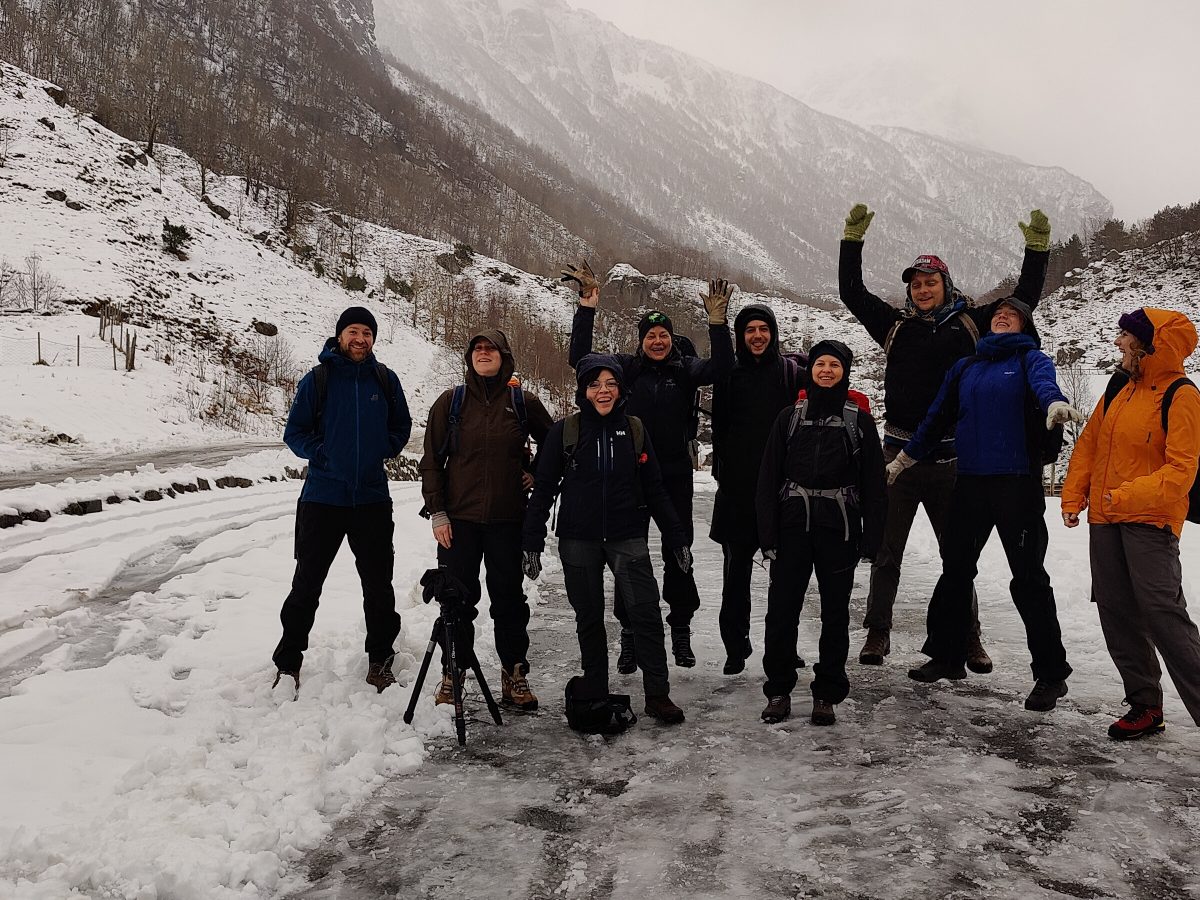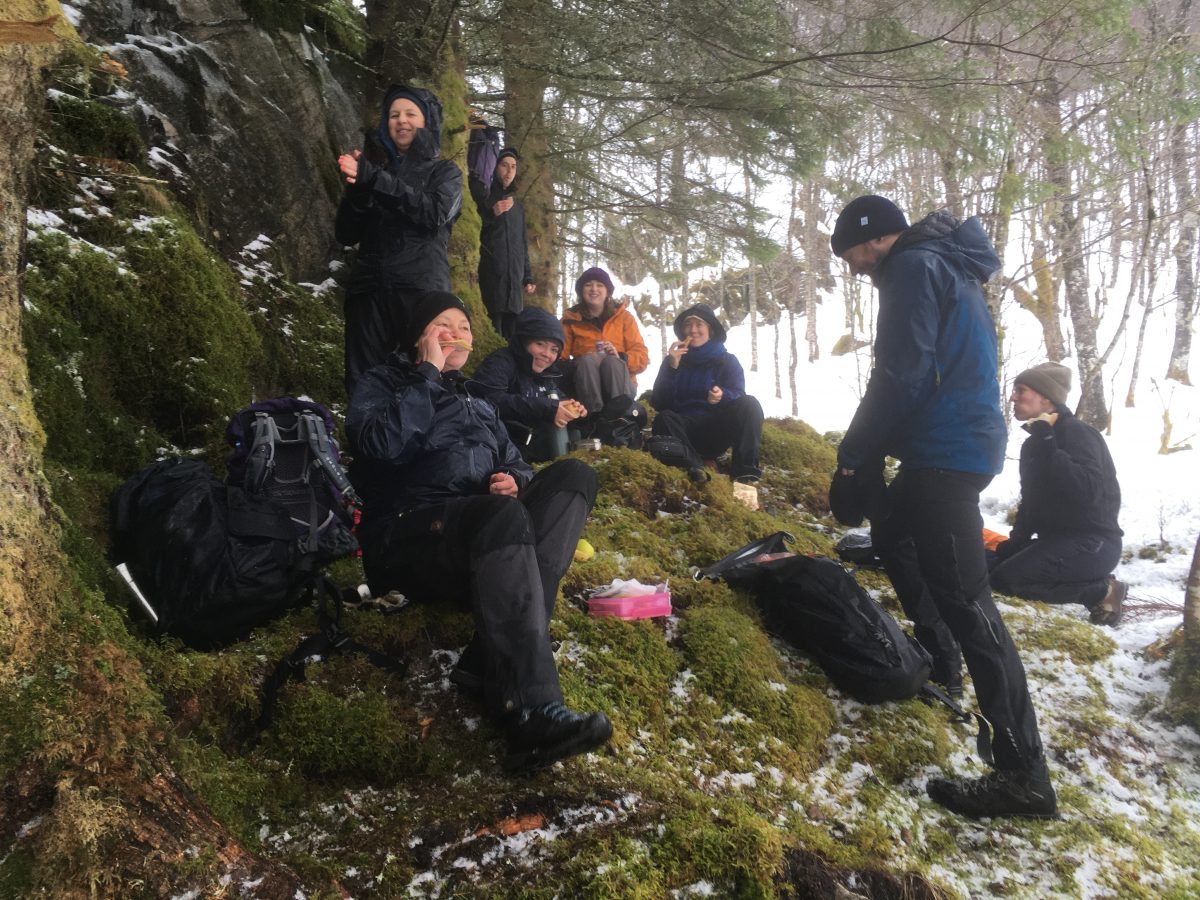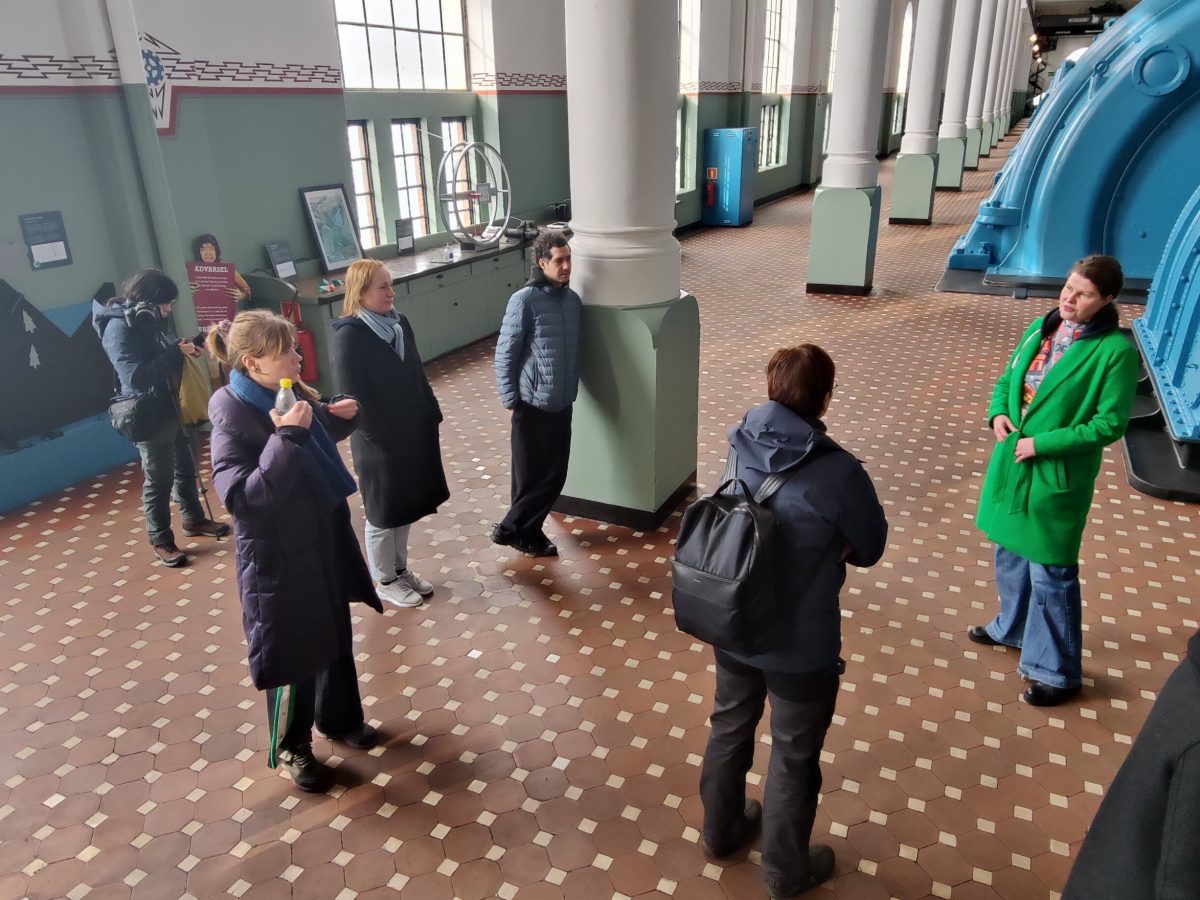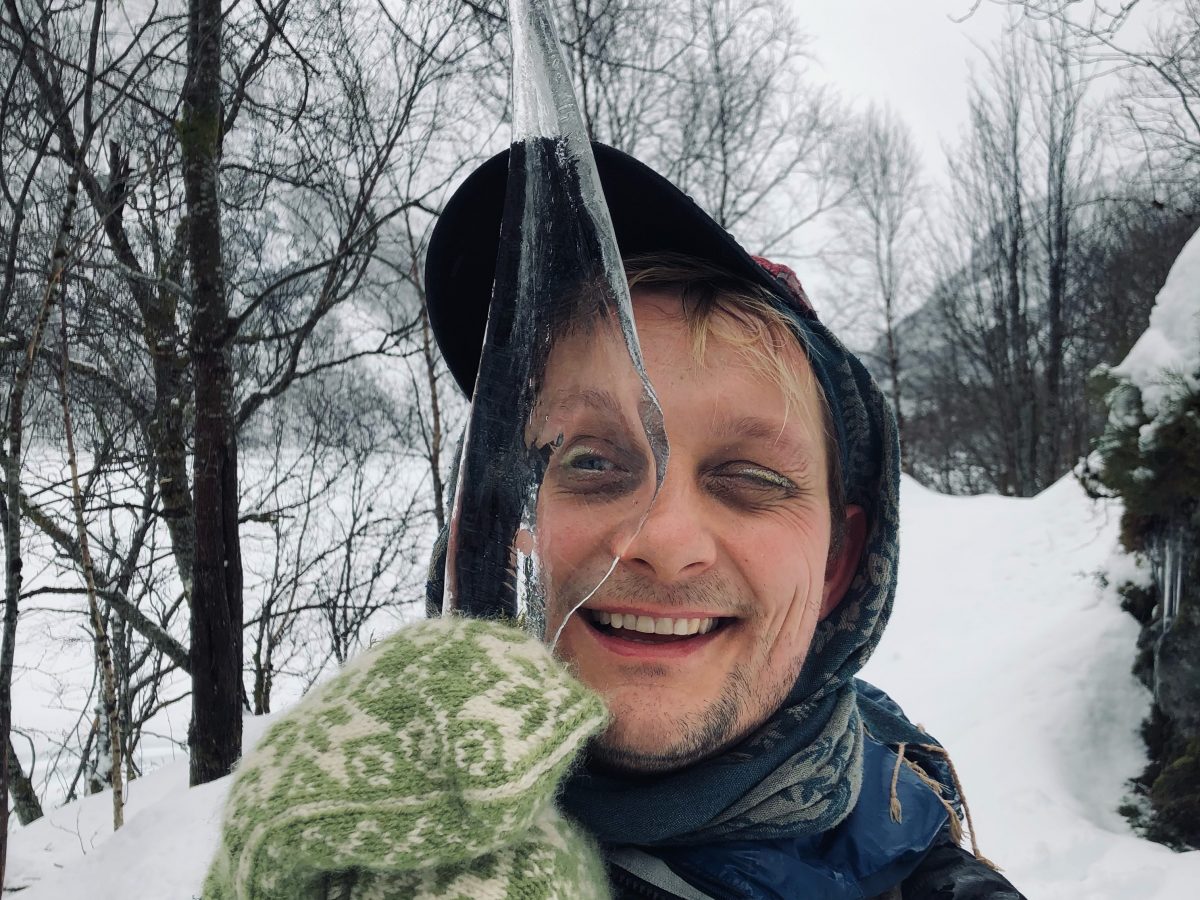Landscape as Material Witness – workshop with Susan Schuppli
Published
Eight artists were gathered in Bergen and Odda this week for a workshop with artist-researcher Susan Schuppli. Together, they have explored how events and processes leave traces in nature and ecosystems.
Through site-based fieldwork, discussions, and presentations, the artists have reflected on how environmental systems are recording evidence of change, traces which are being expressed aesthetically through visible changes in surface effects. The workshop invited the participants to consider an expanded notion of the Earth as a sensor engaged in multiple forms of planetary processing and transmission. How can ecological materials become compelling witnesses to events and processes? Which potential strategies might be developed for narrating and representing the emergence of such Earth evidence? The group has also worked on identifying different modes of recording, documenting, and archiving based on their specific research interests and projects.
The workshop emerges from ideas developed in Schuppli’s project Material Witness, where she examines how evidence of events and processes can be found in objects and entities, as well as in the very mechanics of recording instruments.
Susan Schuppli
Susan Schuppli is an artist-researcher based in the UK whose work has explored the ways in which non-human witnesses, such as materials and objects, enter into public discourse and testify to historical events, especially those involving political violence, ethnic conflict, and war crimes. This research resulted in the monograph Material Witness: Media, Forensics, Evidence, published by MIT Press in 2020 as well as various artworks, notably “Can the Sun Lie”, “Evidence on Trial” and “Nature Represents Itself”. Consequently Schuppli’s work has assumed many different modes of communication from legal analysis and public advocacy to theoretical reflection and creative exploration. Her current research and artistic production expands these legal investigations to examine how environmental systems and the transformations brought about by global warming are also generating new forms of evidence; creating, in effect, a planetary archive of material witnesses. Much of this work has been developed through the multi-year Learning from Ice project which reflects upon the ways in which the different knowledge practices mediated by ice are entangled with legal questions, human rights violations but also claims for social and environmental justice. Schuppli’s artistic work has been exhibited throughout Europe, Asia, Canada, and the US. She is a recipient of a COP26 Creative Commission Listening to Ice sponsored by the British Council, which involves scientific and community-based work at Drang Drung Glacier in Ladakh, India. She is Director of the Centre for Research Architecture, Goldsmiths University of London and is an affiliate artist- researcher and Board Chair of Forensic Architecture.
Participating artists
Thanee Andino is a polyglot artist and designer originally from Tegucigalpa, Honduras. Her focus started on Architecture and Interior design in Honduras. She then moved to Norway, where she had lived for the past nine years. She recently finished her master’s degree in Design specialising in Visual Communication from the Faculty of Fine Art, Music, and Design (KMD) in Bergen. Her master focused on decolonizing Design, feminism, identity, and migration issues. Andino is also the winner of 2021’s newcomer award from Design Region Bergen for her master’s project. Her work is often interdisciplinary and speaks to life with bold and colorful forms, and embraces collaborations in her practice. She’s a design dissenter, questioning societal norms and government power. She recently joined the artistic research project Illuminating the non-representable, led by Professor of Illustration Hilder Kramer at KMD. In addition, Andino is the project leader in the IN-R project Illustration as Sound.
Ingrid K. Bjørnaali is a video artist from Kristiansand, based in Oslo. She recently finished her MFA studies at the Oslo National Academy of Fine Art, partially spent on exchange in Helsinki at the Taideyliopiston Kuvataideakatemia. In her video practice, she captures natural landscapes via various camera technologies and software types, proceeding to work with these bits and pieces of nature based on their virtual outcomes. Her works explore the omnipresence of the digital in our experience of the world as well as the inability of technology to adequately comprehend the natural.
Robin Everett graduated from the Bergen Academy of Art and Design (MA, 2018) and The Glasgow School of Art (BA, 2012). Recent exhibitions include PODIUM (Oslo), Isotop (Bergen), Lofoten International Art Festival, Augusta (Helsinki), Tag Team (Bergen), and Studio17 (Stavanger). Alongside this he is an active member of Mustarinda Association (Finland) and runs the residency program, spending several months a year there. Everett was born in the UK and currently lives and works in Bergen, Norway. His practice employs video, text, and sculpture as equal considerations of time-based media to ask how oblique understandings and new knowledges manifest from emerging technologies.
Åsne Eldøy works within the medium of photography, publications and installation, mixing the language of looking, reading and building. In Eldøy’s artistic practice, themes such as belonging and transformation are looked upon. Man made landscapes and the wonders of nature. A repeated investigation is on how mankind takes nature and creates culture – that we transform natural landscapes and create new, urban environments, which then become our homes. The approach is often poetic, yet political, seen through local communities and city development. Eldøy co-founded Topos Bokforlag with Arild Våge Berge in 2017. Topos is to serve as a platform for publishing artist books by emerging artists and to convey a diversity of artistic practices through the book format.
Vilde Salhus Røed is a visual artist with a master’s degree in fine art from Bergen University of Arts and Design (2008), specialising in photography. She works with storytelling, often employing photography as a lens and a tool to investigate reality, including imagination, abstract ideas and the untrue. In several of her project, she´s investigated stories from archives through photography and other “documents”, placing personal narratives against the backdrops of cultural history and socio-political currents. Vilde is fascinated by the interplay between memory and imagination, and how collective memory is created. She explores this by looking at how visible and invisible, true and untrue stories are told and retold. While she often works photographically, her works are just as likely to consist of video, sound, text, books or other technologies as they are to be in the form of photographs.
Fabian Lanzmaier works with sound and music, as a solo artist as well as in several formations combining sound with installations, theater, dance, moving image and live performances. In his live performances he uses audio synthesis to explore the aspects of texture and structure of sounds as well as its presence within space. He is experimenting with perception and ideas of natural / artificial sounds, fluid and ambiguous environments. Lanzmaier studied at the Institute of Electroacoustic Composition in Vienna. As a member of the collectives Columbosnext, Verschubu Records and Velak he hosts concerts, performances and exhibitions.
Peter Voss-Knude has written and released three music records since 2016, all available on Spotify. They contain experimental-but-catchy tunes that circle around ideas of masculinity and martyrdom, community, conflict reportage, compromise and idealism, love between men, shame, loneliness, diplomacy, magic and queer intimacy. They came into being from Voss-Knude’s long standing, critically artistic engagement with the Danish Armed Forces. He is interested in using music within the context of contemporary art, to hint towards a moment after purely discoursive and deconstructive methodologies. Dissatisfied with strictly conceptual and/or relational practices, he aims towards building a regenerative praxis in which dirty, passionate bodies collide with the superiority of the intellectually academic.
Dianne Murphy graduated in 2020 with an honours BA in Fine Art from Dún Laoghaire Institute of Art, Design and Technology (IADT), Dublin, Ireland. In her practice, she works with a variety of mediums, such as scripting, audio, video, sculpture, and virtual reality, utilising the isolation of virtual environments. Murphy recently completed her thesis on the relevance of virtual reality as an artistic medium in contemporary society.
The workshop is initiated by Åse Løvgren, project developer at BEK – Bergen Centre for Electronic Arts, and organised by BEK in collaboration with the research project «Illuminating the Non-Representable» at KMD, University of Bergen, led by professor Hilde Kramer.
Photos: Åse Løvgren, Dianne Murphy, and BEK






